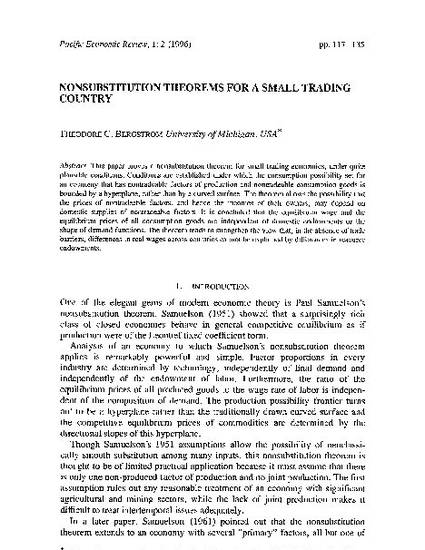
In 1951, Paul Samuelson showed that a surprisingly rich class of economies the production possibility frontier is a linear and even with neoclassical substitution possibilities, as outputs adjust, firms continue to use inputs and outputs in the same proportions. This model is often thought to be of limited practical value since it assumes that there is only one non-produced factor, and no joint production. The single factor assumption rules out economies in which agriculture and mining are important and the lack of joint production leaves no good way to handle durable capital goods. In this paper, I extend the Samuelson model to small trading economies with many nontradeable goods, some of which may be fixed factors, and where joint production is allowed. In my model, althought the production possibility frontier may be curved, the consumption possibility frontier after trade is linear. Output prices and wages of labor are determined independently of factor endowments or demand. The prices of other non-traded factors may depend on endowments but are independent of demand.
- Samuelson nonsubstitution theorem,
- international trade,
- small country,
- factor price equalization,
- nonproduced factors,
- nontradeable goods
Available at: http://works.bepress.com/ted_bergstrom/19/
